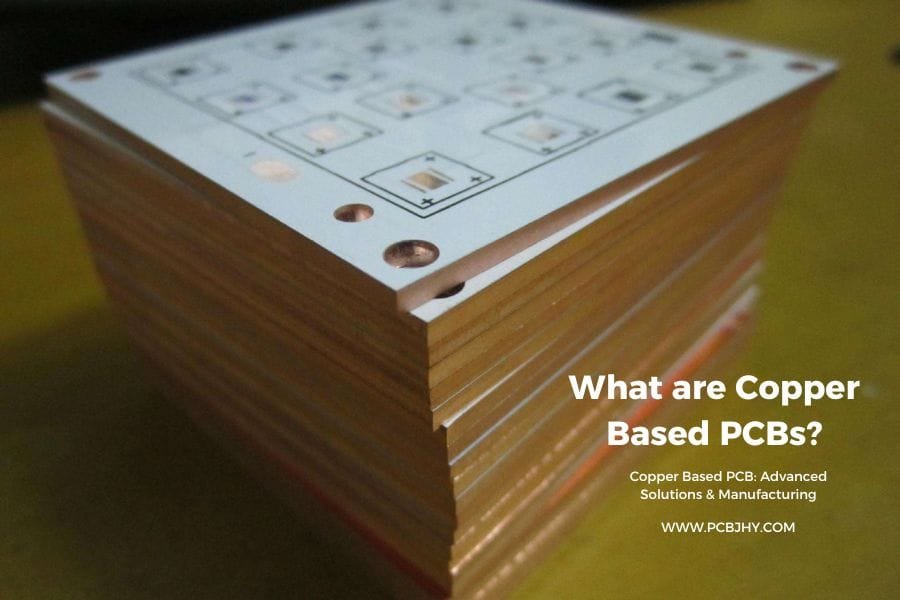When routing traces across a printed circuit board, the impedance encountered by signals should be carefully controlled. Impedance is like the resistance to current flow that the signals experience. Matching the trace impedance to the impedance of ICs and other components prevents unwanted reflections of data. This helps maintain signal integrity and timing across the board. If impedance is uncontrolled, signals can reflect back like echoes, causing distortion and corruption. Several common impedance standards are used in PCB design to optimize performance. Single-ended impedance involves a single trace over a ground plane, with common values around 50-75 ohms. Differential routing uses a pair of traces to carry complementary signals, often targeting 100 ohm impedance. Traces may also be terminated or non-terminated, requiring different impedance tuning techniques. And geometries like microstrip and stripline provide reference planes to help control impedance. By understanding these core impedance categories, PCB designers can make informed layout decisions to deliver boards with clean signals, reliable timing, and optimized data throughput.
Impedance is the measure of opposition that a circuit presents to a current when a voltage is applied. In PCB design, impedance refers to the characteristic impedance of a trace, which is a measure of how much resistance a trace offers to high-frequency signals. Controlled impedance refers to the consistent impedance maintained by a trace over a given length. Maintaining controlled impedance is crucial for reliable signal transmission and to minimize signal reflection, crosstalk, and electromagnetic interference.
Common Controlled Impedance Types
There are several types of controlled impedance that are commonly used in PCB design. Each type has its own set of advantages and disadvantages, which makes it suitable for different applications. The most common types of controlled impedance are:
- Microstrip – Microstrip is the most commonly used controlled impedance type. It involves a signal trace on one side of a dielectric layer and a ground plane on the other side. This type of controlled impedance is easy to design and is cost-effective.
- Stripline – Stripline is another type of controlled impedance that is commonly used in PCB design. It involves a signal trace between two ground planes. This type of controlled impedance is more expensive to design and manufacture than microstrip, but it provides better shielding and is suitable for higher frequency applications.
- Dual Stripline – Dual stripline is similar to stripline, but it involves two signal traces between two ground planes. This type of controlled impedance provides better isolation between signals and is suitable for differential signal transmission.
- Edge-Coupled Microstrip – Edge-coupled microstrip is a type of controlled impedance that involves two signal traces running parallel to each other on a dielectric layer. This type of controlled impedance provides good isolation between signals and is suitable for high-speed applications.
- Edge-Coupled Stripline – Edge-coupled stripline is similar to edge-coupled microstrip, but the signal traces are located between two ground planes. This type of controlled impedance provides better shielding and is suitable for higher frequency applications.
Single-ended impedance
Single-ended traces with controlled impedance are commonly used for routes like clock signals or connections to ADC/DAC interfaces. The most typical single-ended impedance values are 50 ohms and 75 ohms. These levels match the output impedance of many drivers to prevent signal reflections. For a 50 ohm trace, careful tuning of trace width and spacing to ground is needed to hit the target impedance over the board material. Typical widths for 50 ohm lines on FR-4 are 5-15 mils depending on stackup. Wider traces or closer ground plane spacing lowers impedance. Narrower, more isolated traces raise it. Many calculators and modeling tools are available to dial in impedance based on conductor and dielectric properties. Controlled single-ended impedance lines ensure clock signals, digital data, and other critical nets transmit reliably across the PCB without distortion.
Differential impedance
Differential routing involves pairs of traces carrying complementary signals to increase noise immunity. The two lines are run in tight proximity to create a coupling effect. This allows differential signals to reject common mode noise. A standard target impedance for differential pairs is around 100 ohms. Tight trace coupling, matched trace lengths, and routing over a common reference plane helps maintain 100 ohm impedance across the pair. Controlling skew and propagation delays between the two traces is critical to prevent data errors. Differential signals require very tight length and impedance matching, within 25 mils or less. Small differences can throw off timing and unbalance the lines. Careful modeling, controlled layout, and equal via counts optimize differential impedance. This allows high speed interfaces like USB, HDMI, and PCIe to function properly with clean signals.
Terminated and non-terminated traces
Proper impedance control requires managing terminated and non-terminated traces differently. Terminated lines have discrete resistors at the end to absorb the signals and prevent reflections. The terminators match the characteristic impedance, often 50-100 ohms. Non-terminated traces require the impedance be tuned along the entire path back to the driver to avoid reflections.
For terminated lines, the terminations should be placed as close to the receiver as possible. Series resistor networks or AC coupling capacitors to ground are common termination methods. Non-terminated routes must be impedance controlled through careful trace sizing, spacing, and stacking up reference planes. Vias and other discontinuities should be minimized on non-terminated traces.
Whether terminated or not, the goal is to match impedance of the entire signal path, from driver to receiver. This prevents reflections from distorting signals and timing. Proper modeling and layout techniques for managing terminated and non-terminated traces are key for high signal integrity.
Stripline and microstrip geometries
Stripline and microstrip are common controlled impedance geometries using reference planes. Stripline has a trace routed between two reference planes above and below. This fully encloses the trace to tightly control impedance and acts as a signal shield. Microstrip has one reference plane, usually a ground plane below the signal layer. The trace is exposed to air above.
Both stackups allow impedance tuning by changing trace dimensions and dielectric materials between the trace and plane(s). Thinner dielectrics or wider traces lowers impedance. Narrower traces or thicker dielectrics raise it. The planes provide low inductance return paths for signals.
Extensive modeling and field solving helps dial in impedance on these stackups. Effects like surface roughness and glass weave must be accounted for in modeling. Stripline allows the tightest control of impedance due to the enclosed reference planes. Microstrip is easier to assemble but has slightly more variation. Both provide reliable impedance control when implemented properly.
Characteristics and Advantages of Each Type of Controlled Impedance
Each type of controlled impedance has its own set of characteristics and advantages, which makes it suitable for different applications. Microstrip is the most commonly used controlled impedance type because it is easy to design and cost-effective. Stripline provides better shielding and is suitable for higher frequency applications. Dual stripline provides better isolation between signals and is suitable for differential signal transmission. Edge-coupled microstrip provides good isolation between signals and is suitable for high-speed applications. Edge-coupled stripline provides better shielding and is suitable for higher frequency applications.
Choosing the Right Controlled Impedance Type
Choosing the right controlled impedance type for your PCB design depends on several factors, including the frequency of the signal, the size of the board, and the cost. Microstrip is the most commonly used type of controlled impedance and is suitable for most applications. Stripline is suitable for higher frequency applications and provides better shielding, but it is more expensive to design and manufacture. Dual stripline is suitable for differential signal transmission, but it requires more board space. Edge-coupled microstrip and edge-coupled stripline provide good isolation between signals and are suitable for high-speed applications.
Calculating Controlled Impedance
Calculating controlled impedance is an important part of designing a PCB for high-speed applications. The characteristic impedance of a trace depends on several factors, including the width and thickness of the trace, the dielectric constant of the material, and the distance between the trace and the ground plane. There are several online calculators and software programs that can be used to calculate the controlled impedance of a trace.
Applications of Controlled Impedance in High-Speed Digital and Analog Signal Transmission
Controlled impedance is crucial for high-speed digital and analog signal transmission. Maintaining controlled impedance ensures that the signal is transmitted with minimal distortion, crosstalk, and electromagnetic interference. This is particularly important for high-speed applications where even small variations in impedance can cause signal degradation.
PCB Manufacturers and Controlled Impedance
PCB manufacturers play a critical role in ensuring that controlled impedance is maintained during PCB manufacturing. The manufacturing process involves several steps that can affect the impedance of a trace, including etching, plating, and laminating. PCB manufacturers use specialized equipment and processes to ensure that the impedance of a trace is maintained within the required tolerances.
Conclusion
Controlled impedance is a critical aspect of PCB design for high-speed applications. Understanding the different types of controlled impedance and their applications is crucial for successful PCB designs. Each type of controlled impedance has its own set of advantages and disadvantages, which makes it suitable for different applications. Choosing the right controlled impedance type depends on several factors, including the frequency of the signal, the size of the board, and the cost. Calculating controlled impedance is an important part of designing a PCB for high-speed applications. PCB manufacturers play a critical role in ensuring that controlled impedance is maintained during PCB manufacturing.
Impedance Control PCB Manufacturer
If you’re looking for a reliable PCB manufacturer that specializes in controlled impedance PCB prototyping and production, look no further. Our company has years of experience and expertise in producing high-quality PCBs with precise controlled impedance. Whether you need a small prototype batch or a large volume production run, we can deliver on time and within budget.
We use the latest technology and equipment to ensure that every PCB we manufacture meets the required impedance specifications. Our team of skilled engineers and technicians work closely with our customers to understand their specific needs and requirements and provide personalized solutions to ensure their success.
Contact us today to get started on your next controlled impedance PCB project. Our team is ready to provide you with a competitive quote and excellent service. Let us help you turn your ideas into reality.




















